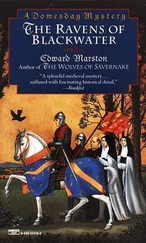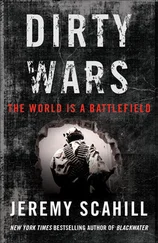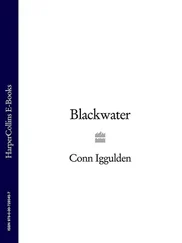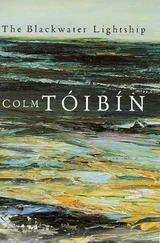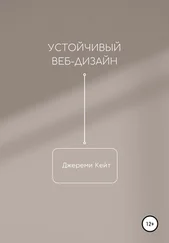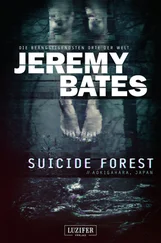• N965BW, a CASA 212, has traveled regularly to Pinal Airpark, the Southern California Logistics Airport, which is used by the military, and has made stops in Turks & Caicos, the Dominican Republic, Bahamas, St. Croix, and Trinidad and Tobago.
• N966BW, a CASA 212, has been to Pinal Airpark, many of the same Carribean stops as N965BW, Pope Air Force Base, and has made several Dulles-Johnston trips.
• N967BW, a CASA 212, was last recorded heading from Goose Bay to Narsarsuaq two weeks after N962BW.
• N968BW, a CASA 212, which regularly stops at Johnston County, Dulles, Phillips Airfield, and Camp Peary, has been to Pope Air Force Base, Pinal Airpark, and Oceana Naval Air Station.
In addition, though Blackwater’s aircraft in Afghanistan flew normal circuits, the company was also charged with flying out of the country, including to Uzbekistan. Air Force Capt. Edwin R. Byrnes was quoted in the FAA report on the crash of Blackwater 61 as saying that one of the aircraft English and Hammer were trained to use, “[t]he Metro was going to be used like a private jet to fly to Uzbekistan.” 85Uzbekistan has been one of the “key destinations” for both U.S. military and CIA renditions. Prisoners are alleged to have been brought there both for interrogation and repatriation from Afghanistan. 86Also, as it happens, Blackwater’s planes in Afghanistan operate out of Bagram, a known U.S.-run detention and torture facility. According to Blackwater /Presidential’s Afghanistan contract, all personnel “are required to possess a Secret security clearance.” 87The contract also outlined “operations security” requirements: “Information such as flight schedules, hotels where crews are staying, return trips, and other facts about the international mission shall be kept close hold and only communicated to persons who have a need to know this information. Flight crews should be aware of persons who are seeking information about the contractor, flights, etc. They should seek to maintain a low profile while operating DoD missions.” 88In June 2007 Blackwater released a statement in response to an article in London’s Daily Mail , accusing the company of engaging in renditions. 89“Blackwater and its affiliates do not now and have never conducted so-called ‘rendition flights,’ as the transport of detainees or terror suspects to interrogation centers has become known,” the statement said. (The paper quickly retracted the allegations.) 90It would take a far-reaching investigation to determine what, if any, involvement Blackwater has had in the government’s secret rendition programs. Company president Gary Jackson has been bold in bragging of Blackwater’s “black” and “secret” contracts, which are not publicly available or traceable; he claimed these contracts were so secret he could not tell one federal agency about Blackwater’s work with another. 91Under the war on terror, Blackwater’s first security contract was a “black” contract with the CIA, an agency with which it has deep ties. 92And then there was this development: In early 2005, Blackwater hired the career CIA spy many believe was responsible for jump-starting the Bush administration’s post-9/11 rendition program: J. Cofer Black, the former chief of the CIA’s counterterrorism center. In November 2001, when U.S. forces captured Ibn al-Shayk al-Libi, believed to have run the Al Qaeda training camp in Khalden, Afghanistan, Black allegedly requested and got permission, through CIA Director George Tenet, from the White House to render Libi, reportedly over the objections of FBI officials who said they wanted to see him dealt with more transparently. “They duct-taped his mouth, cinched him up and sent him to Cairo,” a former FBI official told Newsweek . “At the airport the CIA case officer goes up to him and says, ‘You’re going to Cairo, you know. Before you get there I’m going to find your mother and I’m going to fuck her.’” 93
CHAPTER SIXTEEN
COFER BLACK: THE GLOVES COME OFF
SINCE 9/11,few people have had the kind of access to President Bush and covert “war on terror” planning as Ambassador J. Cofer Black. A thirty-year CIA veteran, Black was a legendary figure in the shadowy world of international espionage, having been personally marked for death by Osama bin Laden in the 1990s. He rose to prominence in the spy world following the central role he played in Sudan in catching the famed international terrorist Ilich Ramirez Sanchez, known as “Carlos the Jackal.” Black had spent his career in Africa and the Middle East, and when the 9/11 attacks happened, he enthusiastically seized a key role in plotting out the immediate U.S. response.
On September 13, 2001—two days after the planes crashed into the World Trade Center and the Pentagon—Black was sitting in the White House Situation Room. 1The career CIA veteran was there to brief the President on the kind of campaign he had prepared for since joining the agency in 1974 but had been barred from carrying out. 2After clandestine operations training, Black had been sent to Africa, where he spent the bulk of his CIA career. He worked in Zambia during the Rhodesian War, then Somalia and South Africa during the apartheid regime’s brutal war against the black majority. 3During his time in Zaire, Black worked on the Reagan administration’s covert weapons program to arm anticommunist forces in Angola. 4After two decades in the CIA and a stint in London, Black arrived under diplomatic cover at the U.S. Embassy in Khartoum, Sudan, where he served as CIA Station Chief from 1993 to 1995. 5There, he watched as a wealthy Saudi named Osama bin Laden built up his international network into what the CIA would describe at the end of Black’s tour as “the Ford Foundation of Sunni Islamic terrorism.” 6
During much of the 1990s, agents tracking bin Laden worked under an “Operating Directive” that restricted them to intelligence collection on bin Laden and his network; they did not yet have authorization from the Clinton administration to conduct covert actions. 7In bin Laden, Black saw a man who was a threat and who needed to be taken out. The administration, however, refused to authorize the type of lethal action against bin Laden and his cronies favored by Black. Some of Black’s men were enthusiastic about killing the wealthy Saudi but were rebuffed. “Unfortunately, at that time permissions to kill—officially called Lethal Findings—were taboo in the outfit,” according to CIA operative Billy Waugh, who worked closely with Black in Sudan. “In the early 1990s we were forced to adhere to the sanctimonious legal counsel and the do-gooders.” 8Among Waugh’s rejected ideas was an alleged plot to kill bin Laden in Khartoum and dump his body at the Iranian Embassy in an effort to pin the blame on Tehran, an idea Waugh said Cofer Black “loved.” 9
But while Black and the CIA watched bin Laden, they, too, were under surveillance. In 1994, bin Laden’s group in Khartoum had reportedly determined that Black, who maintained cover as a simple embassy diplomat, was indeed CIA. 10In his definitive book on the secret history of the CIA and bin Laden, Ghost Wars, Steve Coll wrote that bin Laden’s men began to track Black’s routes to and from the U.S. Embassy. “Black and his case officers picked up this surveillance and started to watch those who were watching them,” Coll wrote. “The CIA officers saw that bin Laden’s men were setting up a ‘kill zone’ near the US embassy. They couldn’t tell whether the attack was going to be a kidnapping, a car bombing, or an ambush with assault rifles, but they were able to watch bin Laden’s group practice the operation on a Khartoum street. As the weeks passed, the surveillance and counter-surveillance grew more and more intense. On one occasion they found themselves in a high-speed chase. On another the CIA officers leveled loaded shotguns at the Arabs who were following them. Eventually, Black dispatched the US ambassador to complain to the Sudanese government. Exposed, the plotters retreated.” 11When Black left Khartoum, bin Laden was more powerful than when the veteran spy had arrived; a fact that would help fuel what would become Black’s professional obsession for years to come.
Читать дальше



